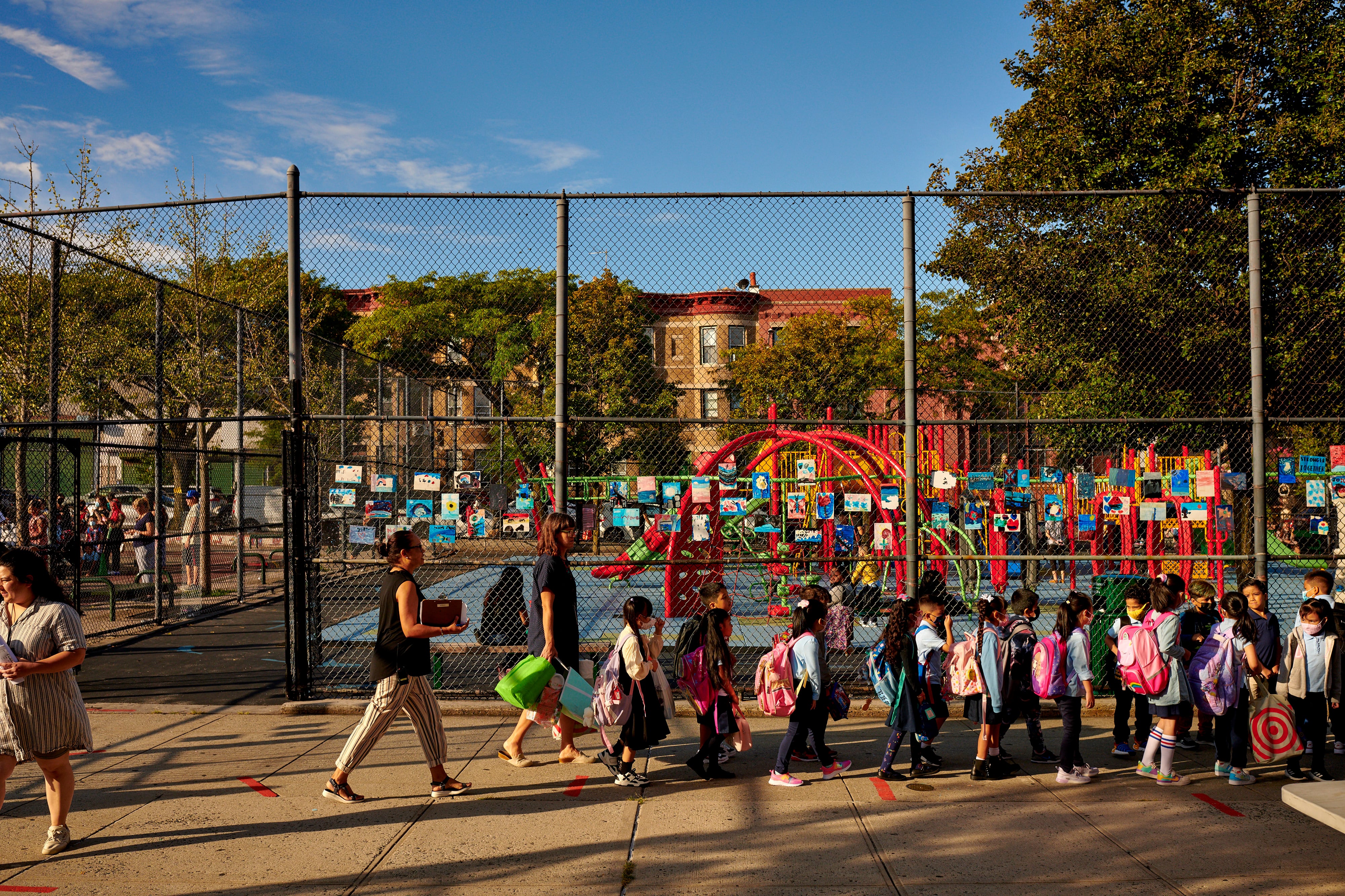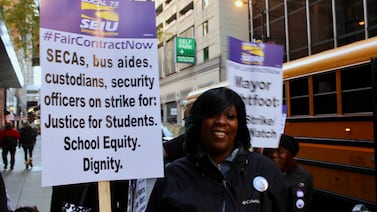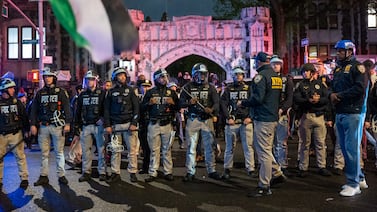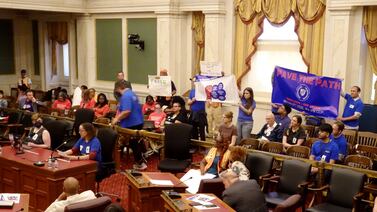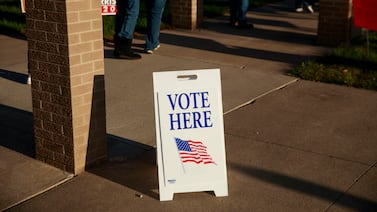Sign up for Chalkbeat New York’s free daily newsletter to get the latest news on NYC’s public schools.
New York City schools with lower than projected enrollments will see their budgets slashed midyear for the first time in four years.
School and Education Department staffers said the move comes as little surprise given the city’s bleak fiscal situation and dwindling federal COVID relief funds. City officials had used federal funding the past three school years to avert the midyear cuts and hold schools “harmless” if their student rosters fell short of the Education Department’s estimates.
“As NYCPS navigates the current fiscal landscape, we’ve made the necessary decision to revert to our pre-COVID-19 budgeting process,” said Education Department spokesperson Nathaniel Styer.
Schools get money in the summer based on the city’s projections of how many students are expected to fill their seats. After the final tallies are taken on Oct. 31, the Education Department adjusts school budgets, clawing back money from schools that enroll fewer students than anticipated. Schools with higher than projected enrollment will still get additional money, similar to past years, though administrators have said it can be difficult to spend the sudden influx of cash effectively in the middle of the school year.
Calee Prindle, an assistant principal at the Facing History School in Manhattan, said her school stands to lose about $160,000 if no more students enroll before Oct. 31.
“Losing that money, it sucks, but for us it’s not going to be wildly detrimental,” she said. “For me, it’s always about the communication, and I’m glad we know now.”
Still, the return to midyear cuts deals a significant blow to schools that may already be reeling from years of shrinking budgets due to enrollment losses and heightened needs in the wake of the pandemic.
United Federation of Teachers President Michael Mulgrew argued that the increase in state funding in recent years should be enough to continue the policy of propping budgets up even if schools miss their enrollment projections.
“It is unacceptable for NYC to cut funding to its public schools especially when the state has made such a strong financial commitment to our students,” he said in a statement.
Education Department faces major budget strain
Even with an increase in state aid, it’s a particularly precarious financial moment for the Education Department and the city as a whole.
More than $7 billion in federal relief funds that the Education Department has received since the beginning of the pandemic expires next September. The city has used that money to fund summer programming and social workers, along with propping up school budgets amid enrollment losses.
On top of that, Mayor Eric Adams earlier this fall ordered all city agencies to cut 5% of their budgets in November, an additional 5% in January, and another 5% in April in response to rising costs as the city faces an influx of asylum-seekers.
The three rounds of cuts would slash a total of $2.1 billion from the Education Department’s budget, according to the Fiscal Policy Institute. It’s an enormous sum that schools Chancellor David Banks has said will likely “affect every aspect of what we do.”
The Education Department has not made final decisions about what to cut in the first round, and the decision to reinstate the midyear adjustment was not related to the budget cut mandate, Styer said.
Officials didn’t say how much the Education Department will save in the cost-cutting move. Last year, the Education Department spent $200 million to avert the midyear cut.
Fiscal belt-tightening plays out in other ways
As part of the Adams administration’s budget cut mandate, the city’s Office of Management and Budget imposed a hiring freeze, according to Education Department staffers and budget documents.
The hiring freeze doesn’t apply to school-based staff, but affects many other positions, including central personnel tasked with supporting schools and specific student populations, such as those who live in temporary housing and children with disabilities, according to staffers and advocates.
“Hiring for each position is going under a lot more scrutiny, and we realize that some may end up getting delayed for some period of time — and we don’t know for how long,” said one central staffer familiar with the budget, who spoke on the condition of anonymity.
A plan to hire more than a dozen temporary staffers to support kids in shelters with educational needs was delayed because of the freeze, and vacant positions on the teams that ensure students with disabilities get necessary services have gone unfilled, according to Advocates for Children, a group that supports vulnerable students.
“We have seen significant delays in students in shelter receiving the school placements and transportation they need,” said Randi Levine, the policy director at Advocates for Children. She noted that some of the Education Department’s federal relief money is earmarked to support students in temporary housing and can’t be spent on other things.
“We don’t want the DOE to squander the resources it has available given the huge need we’re seeing on the ground,” she added.
The worst is likely yet to come. Another central staffer who spoke on the condition of anonymity said teams in central offices have been asked to start preparing for significant cuts – far deeper than in past years.
And while the cuts to the Education Department’s central offices are likely to be the steepest, that division only accounts for between 1-2 % of the Education Department’s overall budget, meaning cuts outside of central offices will almost certainly be necessary.
Two areas likely to get spared: Banks’s signature NYC Reads initiative, which seeks to revamp elementary school literacy instruction by forcing districts to adopt one of three pre-selected reading curricula, and his FutureReadyNYC program, which funds schools to expand career-connected learning, according to the chancellor.
“The reading work that we’re doing and the pathways work that we’re doing is going to be prioritized,” Banks recently told reporters. “That’s where we’re going to be making sure that the investments are still there.”
Alex Zimmerman contributed.
Michael Elsen-Rooney is a reporter for Chalkbeat New York, covering NYC public schools. Contact Michael at melsen-rooney@chalkbeat.org.


